Aviation Day: SharpHeels Salutes Female Aviators
Aviation Day pays tribute to the Wright Brothers, America’s original aviators. Although no one would dispute the brother’s stamp on history, women too have shaped aviation, some at a tremendous cost.
Amelia Earhart, perhaps the best known of all female pilots, once said, “Flying might not be all plain sailing, but the fun of it is worth the price.” Earhart might be the most famous, but one should not overlook the contributions of the long, and expanding, list of female aviators who have left a permanent jet contrail in the history of aviation.
Women have flown aircraft since 1908, according to the Smithsonian National Air and Space Museum. In the early days, women flew primarily private planes, but recently women have entered the cockpits of commercial and military aircraft and flown for NASA in the Space Shuttle.
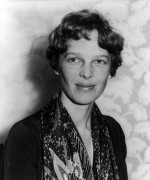 Amelia Earhart knew from the first time she flew in an airplane that she must one day pilot one. She flew her first solo flight in 1921 and in 1922 purchased her first airplane. Earhart helped organize, then raced in, the first transcontinental air race for women in August 1929 in which she placed third. She was the first woman vice president of the National Aeronautic Association and encouraged the organization to begin keeping separate records for female pilots. Earhart lectured across the country and wrote and published several books before her plane disappeared in during an attempt at a flight around the world in 1937. Her plane was never recovered.
Amelia Earhart knew from the first time she flew in an airplane that she must one day pilot one. She flew her first solo flight in 1921 and in 1922 purchased her first airplane. Earhart helped organize, then raced in, the first transcontinental air race for women in August 1929 in which she placed third. She was the first woman vice president of the National Aeronautic Association and encouraged the organization to begin keeping separate records for female pilots. Earhart lectured across the country and wrote and published several books before her plane disappeared in during an attempt at a flight around the world in 1937. Her plane was never recovered.
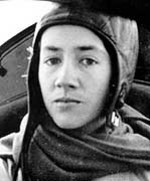 Anne Morrow Lindbergh was somewhat overshadowed by her famous aviator husband, Charles Lindbergh. Although she was his co-pilot for many of his famed flights, she was a champion aviator in her own right. In 1929, Anne Morrow Lindbergh became the first women in the United States to earn a glider pilot’s license, which she followed in 1931 with her private pilot’s license. Lindbergh achieved status as an author as well with her books, Listen the Wind and Bring Me a Unicorn.
Anne Morrow Lindbergh was somewhat overshadowed by her famous aviator husband, Charles Lindbergh. Although she was his co-pilot for many of his famed flights, she was a champion aviator in her own right. In 1929, Anne Morrow Lindbergh became the first women in the United States to earn a glider pilot’s license, which she followed in 1931 with her private pilot’s license. Lindbergh achieved status as an author as well with her books, Listen the Wind and Bring Me a Unicorn.
 Patty Wagstaff was the first woman to win the title U.S. National Aerobatic champion—an award she has won three times. Before she became an airshow pilot thrilling spectators with close to the ground air stunts, Wagstaff got a taste for flying with her father, a Captain for Japan Air Lines, when she would sit with him at the controls. Wagstaff is trained to fly many airplanes and is a Flight and Instrument Instructor. She was inducted into the National Aviation Hall of Fame in 1994. Wagstaff has also worked as a stunt pilot in the film and television industry.
Patty Wagstaff was the first woman to win the title U.S. National Aerobatic champion—an award she has won three times. Before she became an airshow pilot thrilling spectators with close to the ground air stunts, Wagstaff got a taste for flying with her father, a Captain for Japan Air Lines, when she would sit with him at the controls. Wagstaff is trained to fly many airplanes and is a Flight and Instrument Instructor. She was inducted into the National Aviation Hall of Fame in 1994. Wagstaff has also worked as a stunt pilot in the film and television industry.
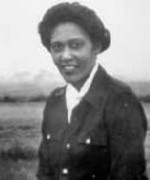 Janet Bragg, a female African American pilot, found the odds stacked against her at every turn but pushed forward like water droplets carving a mountainside. Bragg attended Spellman College and earned her nursing degree, which she used to work as a registered nurse while also studying aircraft mechanics and attending flight school. She earned enough money as an RN to purchase her own airplane. She was turned down by the men at the Tuskegee black pilot training school, even though she passed her license test, because she was a woman. Undeterred, she ultimately earned her license in 1943. Bragg tried to join the WASPs in World War II but was turned down because she was black.
Janet Bragg, a female African American pilot, found the odds stacked against her at every turn but pushed forward like water droplets carving a mountainside. Bragg attended Spellman College and earned her nursing degree, which she used to work as a registered nurse while also studying aircraft mechanics and attending flight school. She earned enough money as an RN to purchase her own airplane. She was turned down by the men at the Tuskegee black pilot training school, even though she passed her license test, because she was a woman. Undeterred, she ultimately earned her license in 1943. Bragg tried to join the WASPs in World War II but was turned down because she was black.
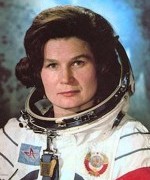 Valentina Tereshkova in 1963 became the first woman ever to fly in space. The Soviet woman was the daughter of collective farmers who took correspondence courses from an industrial school while learning to parachute at age 18. Almost on a lark, she wrote to the Soviet space center and volunteer for the cosmonaut team. They accepted Tereshkova and she began her cosmonaut training in March 1962. Shortly after, in June 1963, she was launched on Vostok 6 in which she circled Earth 70 times before re-entering the earth’s atmosphere and parachuting out of the aircraft.
Valentina Tereshkova in 1963 became the first woman ever to fly in space. The Soviet woman was the daughter of collective farmers who took correspondence courses from an industrial school while learning to parachute at age 18. Almost on a lark, she wrote to the Soviet space center and volunteer for the cosmonaut team. They accepted Tereshkova and she began her cosmonaut training in March 1962. Shortly after, in June 1963, she was launched on Vostok 6 in which she circled Earth 70 times before re-entering the earth’s atmosphere and parachuting out of the aircraft.
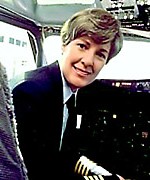 Emily Howell Warner was the first permanent woman pilot of a scheduled passenger airline, but the flight path was not an easy one. Warner paid for her pilot training in her late teens, but her repeated attempts to get Frontier airlines to hire her as a pilot met with little success. Frontier finally hired her in 1973 and by 1976 she became the first female U.S. airline captain. She broke records again by becoming the first female captain of a Boeing 737 for UPS. Warner was the first female member of the Air Line Pilots Association and is a member of the National Aviation Hall of Fame.
Emily Howell Warner was the first permanent woman pilot of a scheduled passenger airline, but the flight path was not an easy one. Warner paid for her pilot training in her late teens, but her repeated attempts to get Frontier airlines to hire her as a pilot met with little success. Frontier finally hired her in 1973 and by 1976 she became the first female U.S. airline captain. She broke records again by becoming the first female captain of a Boeing 737 for UPS. Warner was the first female member of the Air Line Pilots Association and is a member of the National Aviation Hall of Fame.
Women pilots are not the only contributors in aviation. Engineers, mechanics, scientist studying motion sickness…women’s expertise in these areas have enabled all of us to soar to new heights. Let their spirits guide you to dream bigger, soar higher and take off in directions you never thought possible.
 Interviewer Interview Prep
Interviewer Interview Prep Impactful Mentees
Impactful Mentees Benefits of a Mentor
Benefits of a Mentor Advice for First-Time Managers
Advice for First-Time Managers Overcoming the 18-month Itch
Overcoming the 18-month Itch Dressing for Your Style
Dressing for Your Style Interview Style Tips
Interview Style Tips Women's Stocking Stuffers
Women's Stocking Stuffers Gift the Busy Traveler
Gift the Busy Traveler Father’s Day Gift Guide
Father’s Day Gift Guide Airport Layover Activities
Airport Layover Activities Traveling & Eating Healthy
Traveling & Eating Healthy Travel Like a Boss Lady
Travel Like a Boss Lady The Dual California Life
The Dual California Life Gifts for Thanksgiving
Gifts for Thanksgiving Summer Reading List
Summer Reading List Top Leisurely Reads
Top Leisurely Reads New Year, New Books
New Year, New Books Life Lessons from a Sitcom
Life Lessons from a Sitcom Oprah, Amy or Amal?
Oprah, Amy or Amal?






